Théâtre le Vilar
Transformation of an existing theatre in Louvain-la-Neuve






The new competition brief was mainly requesting for more height above the stage, better technical equipment, and improved public visibility.
Ouest decided to take advantage of the specificity of this city, built on two levels of technical space, and pushed the stage one floor down. The project preserves the existing roof structure, creating the extra height within the existing gabarite, and avoids modifying the existing urban volumes too much.
It also allowed to get rid of the existing freight elevator, to organize the logistics for decors etc. completely in the underground levels, and, to offer new possibilities for the theatre to dialogue and open up towards the vivid Place Rabelais. A new public entry is situated on the ground floor, while a new foyer is set on the first floor providing a direct access from the square, even when the rest of the building is closed.





Inside artistic intervention (tiles) by Robin Vermeersch & Dear Reader (Eva Moulaert).


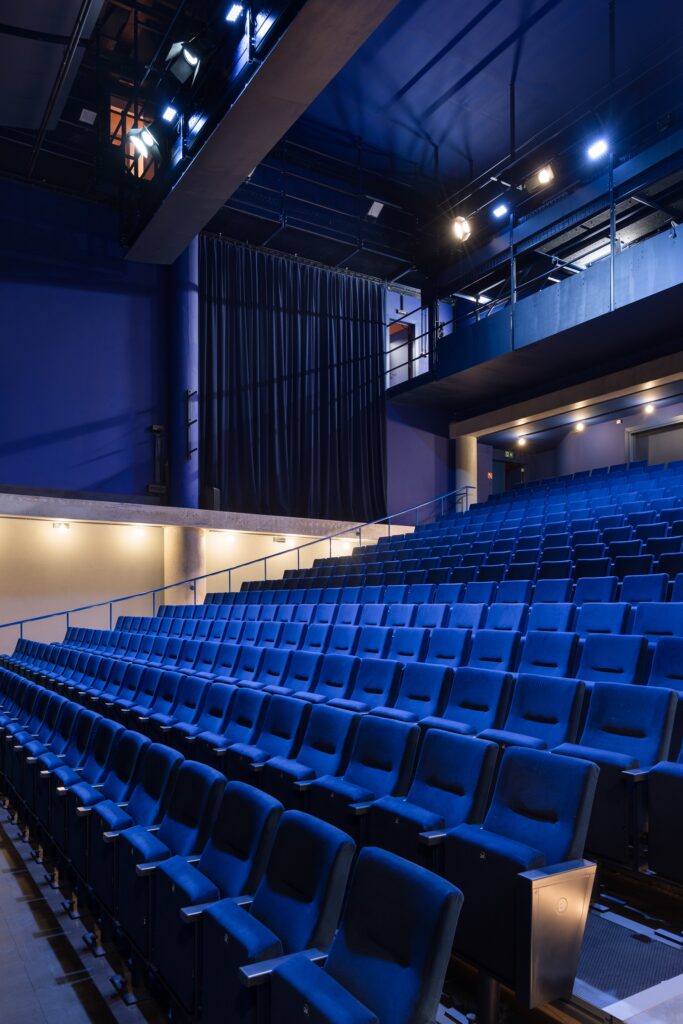

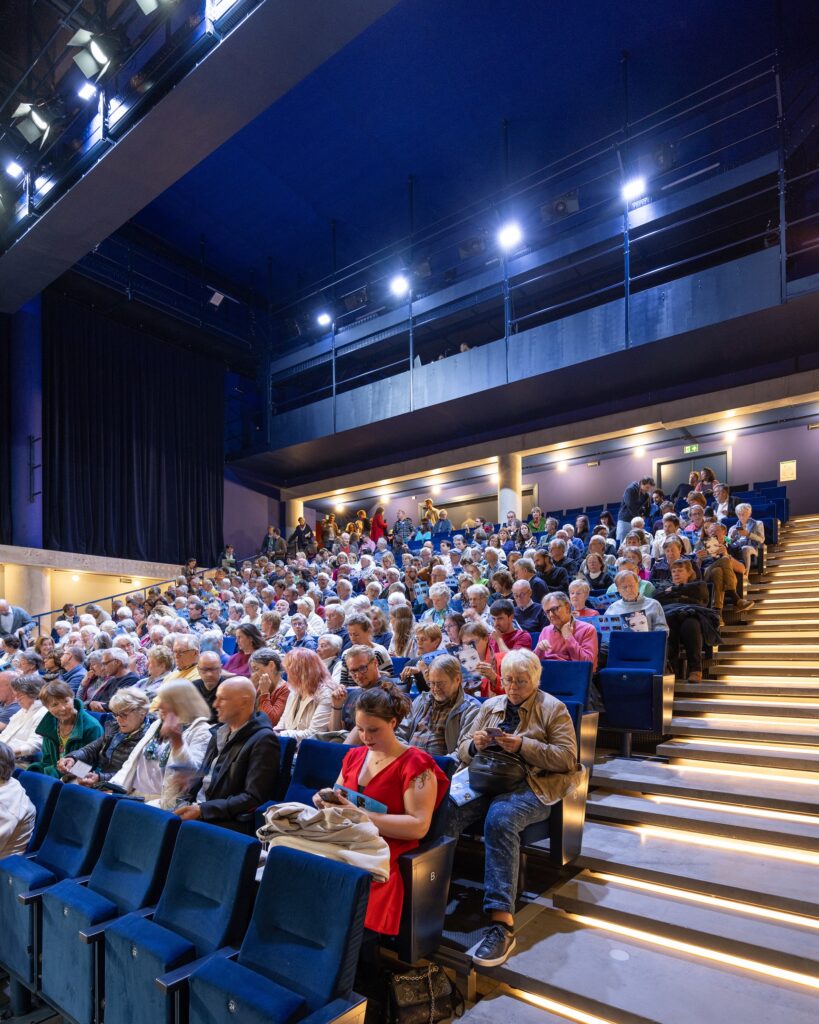




Inside artistic intervention (tiles) by Robin Vermeersch & Dear Reader (Eva Moulaert).


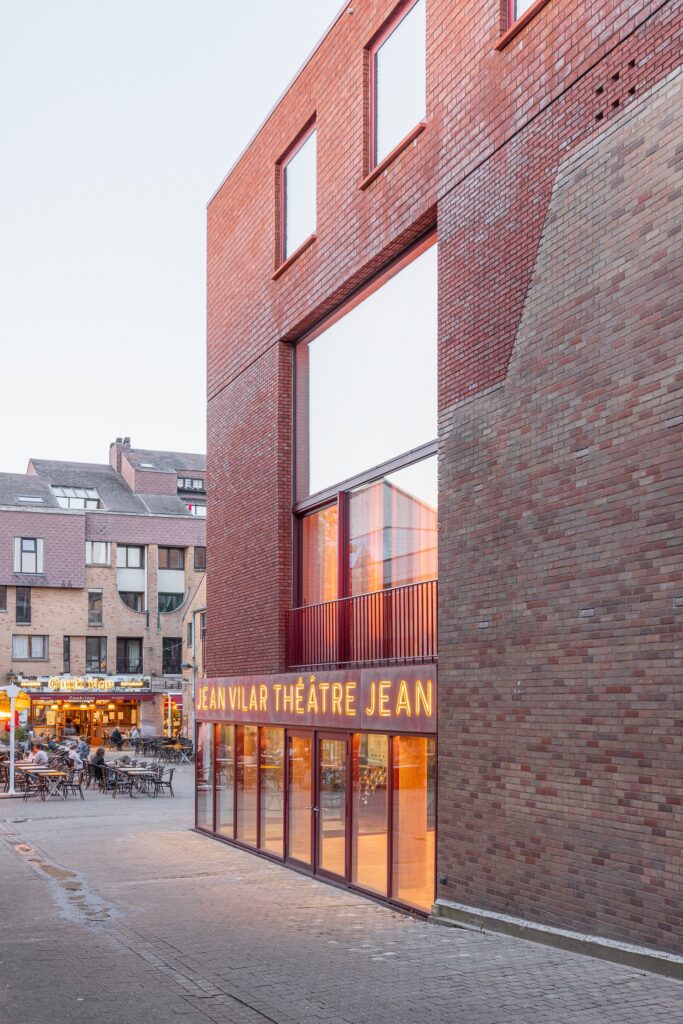



Outdoor artistic intervention (fresco) by Pieter Vermeersch.
Instead of developing a brand-new building identity that stands out of the city fabric, we chose to work with the original material of the 70s city: bricks. The façades of the simple volume are designed as a contemporary dialogue between existing and new brick patterns. Like a palimpsest, the different layers added over time show and reinforce the story of the city and the theatre. A carefully placed window opening to the street reveals the underground level and shows passers-by a hidden part of the city. Not only cars to hide, but also culture to show.




Mock-up of new façades, realized at the start of the works, with the contractor.



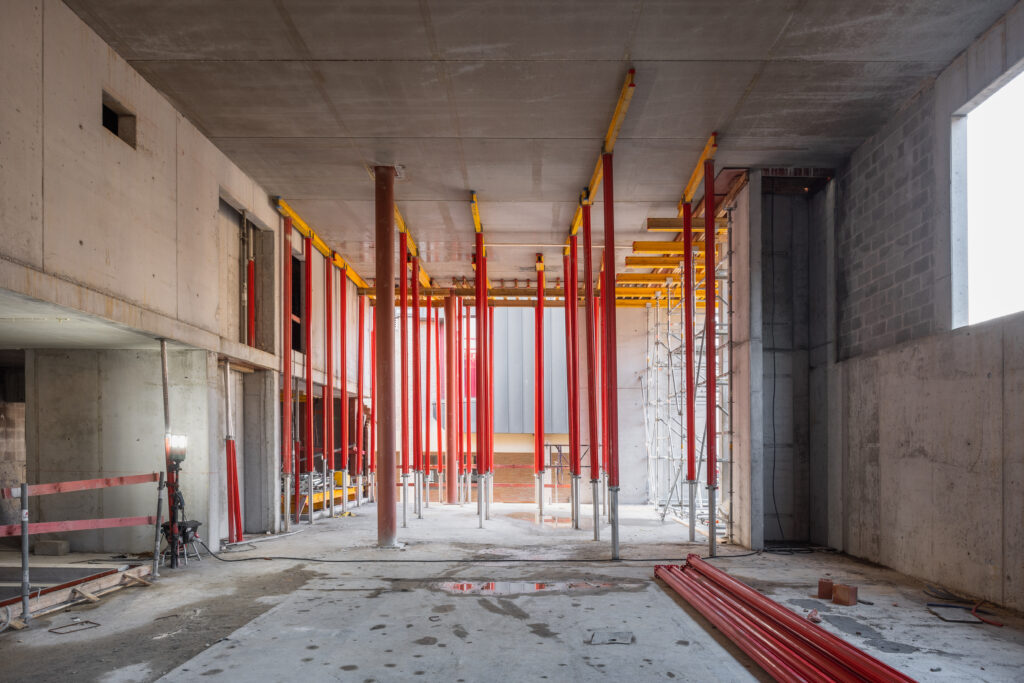


Work on archive plans, with our structural engineers


Research wall at Ouest, while developing and studying the composition, materiality and language of new façades


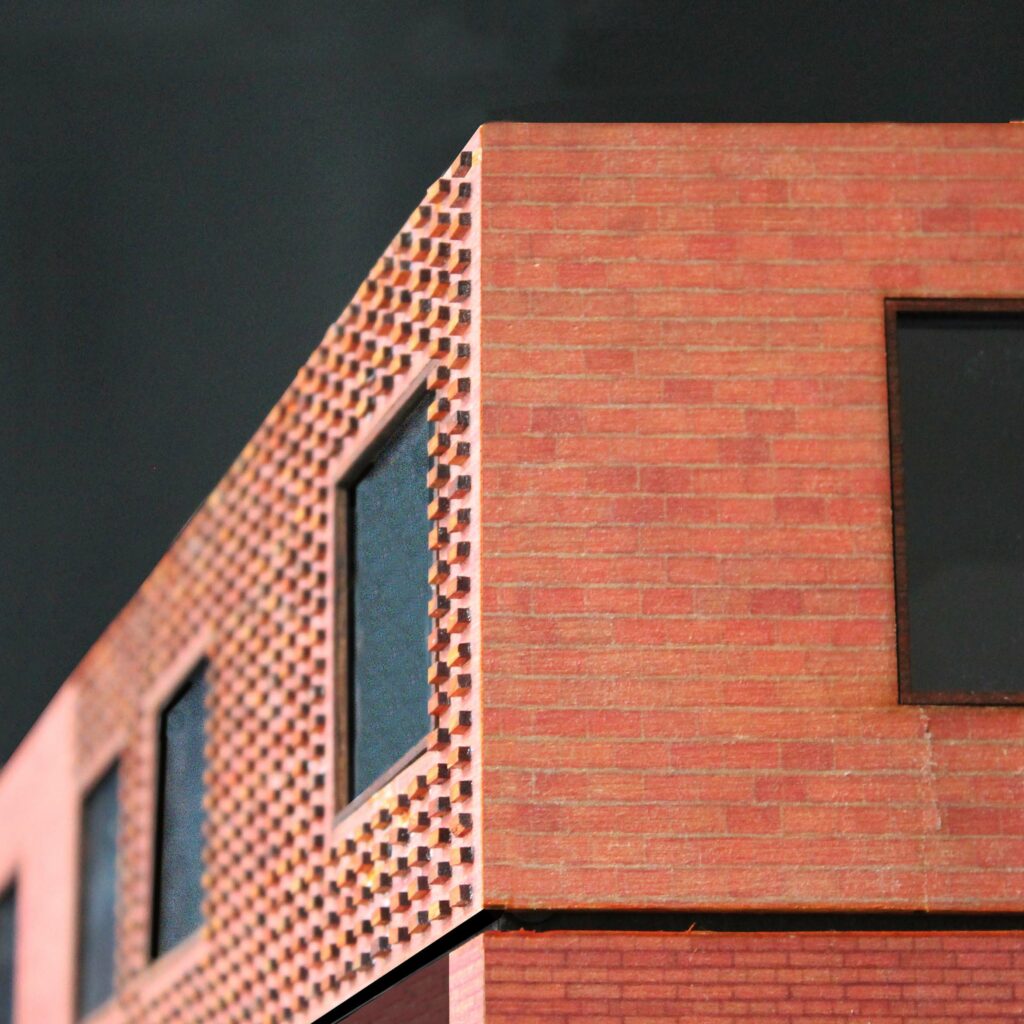
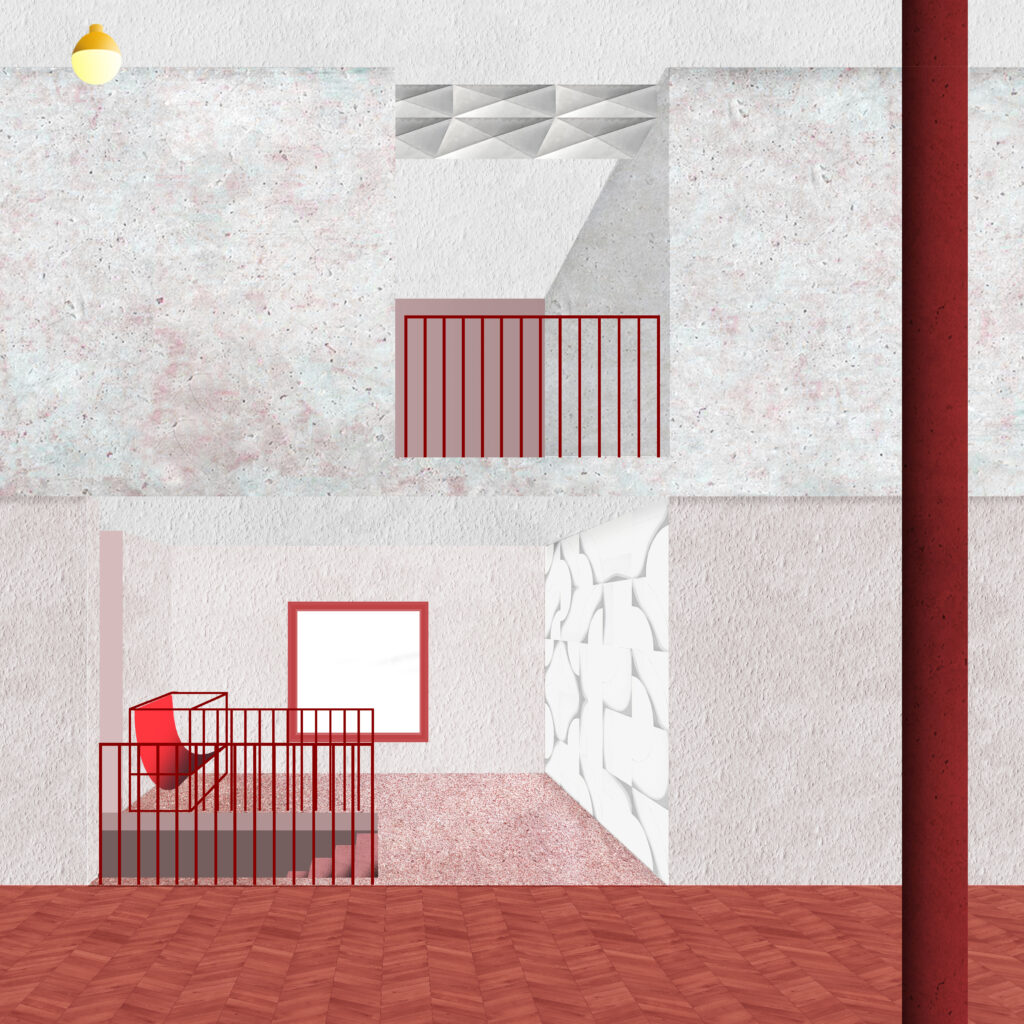
Early collages made to study « fragments » of the project, materialities, colours and proportions.




Louvain-la-Neuve just before the creation of this new city, around 1970.

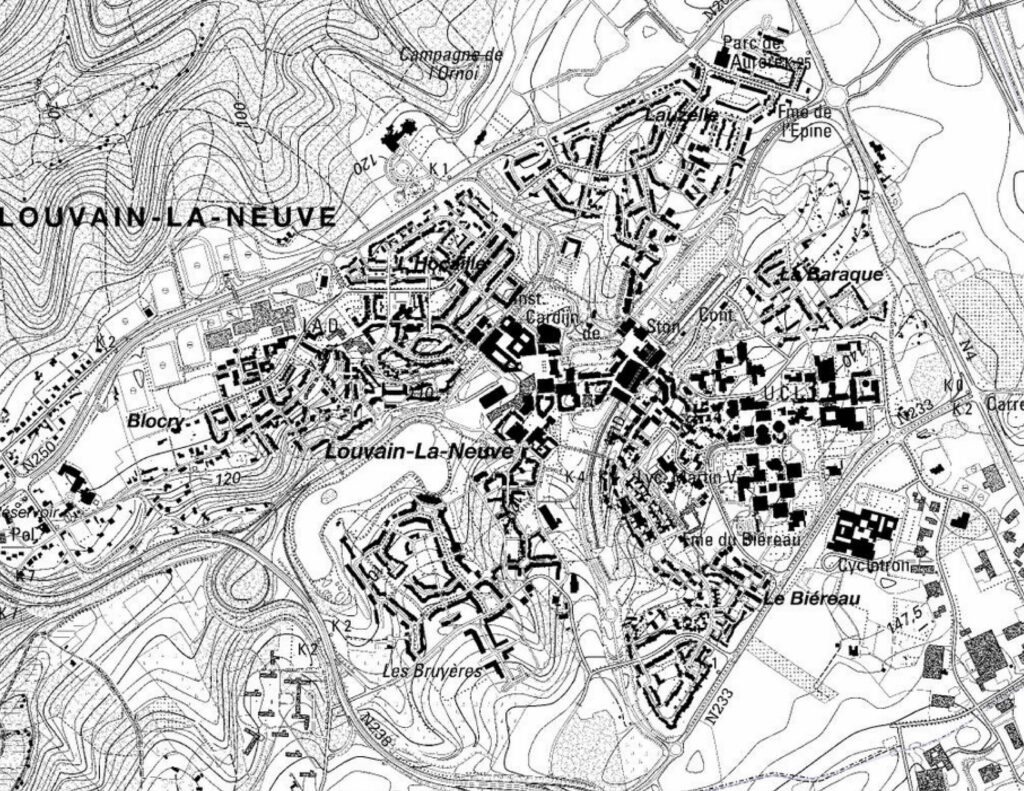


The pedestrian experience in Louvain-la-Neuve. Under their feets, 2 levels of parking,
storage, ventilation pipes and other hidden stuff,…
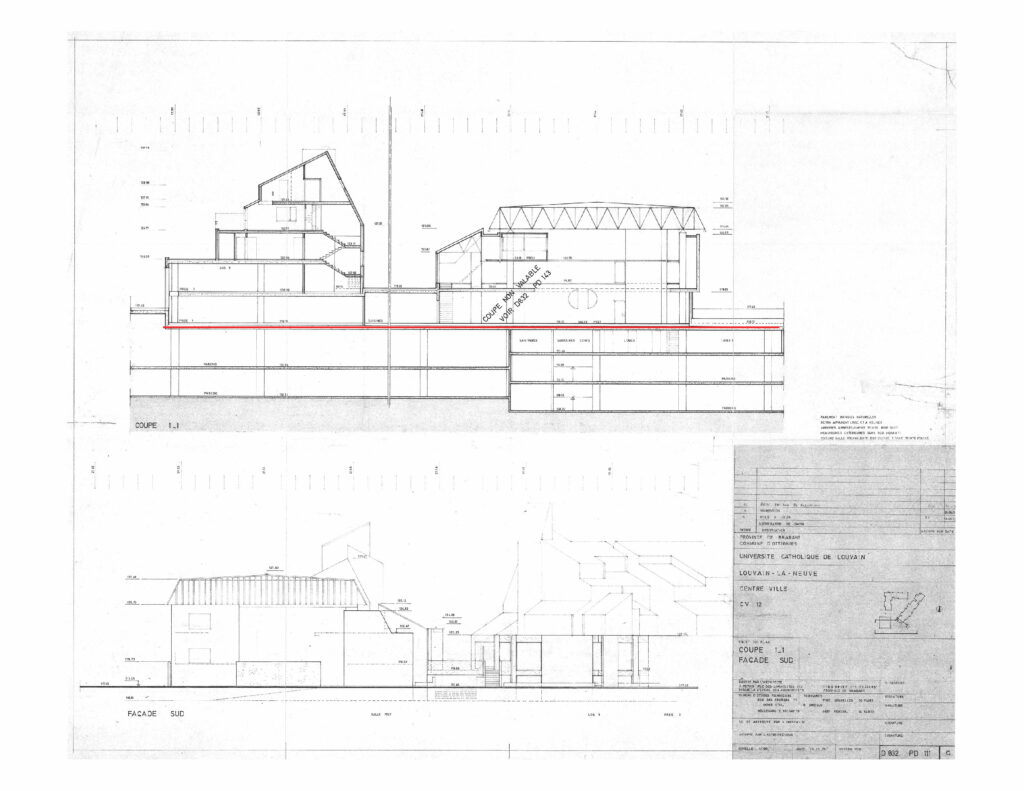

The theatre, before Ouest project. Seen from place Rabelais. The big lift did not allow space for
public entrance on the square by then (was in the back street, rue du Sablon). By moving the
venue down one level, we were able to free ourselves from the monte-charges towards the square
and open up the theatre onto it.


The hidden world under the “street”, captured before the works.

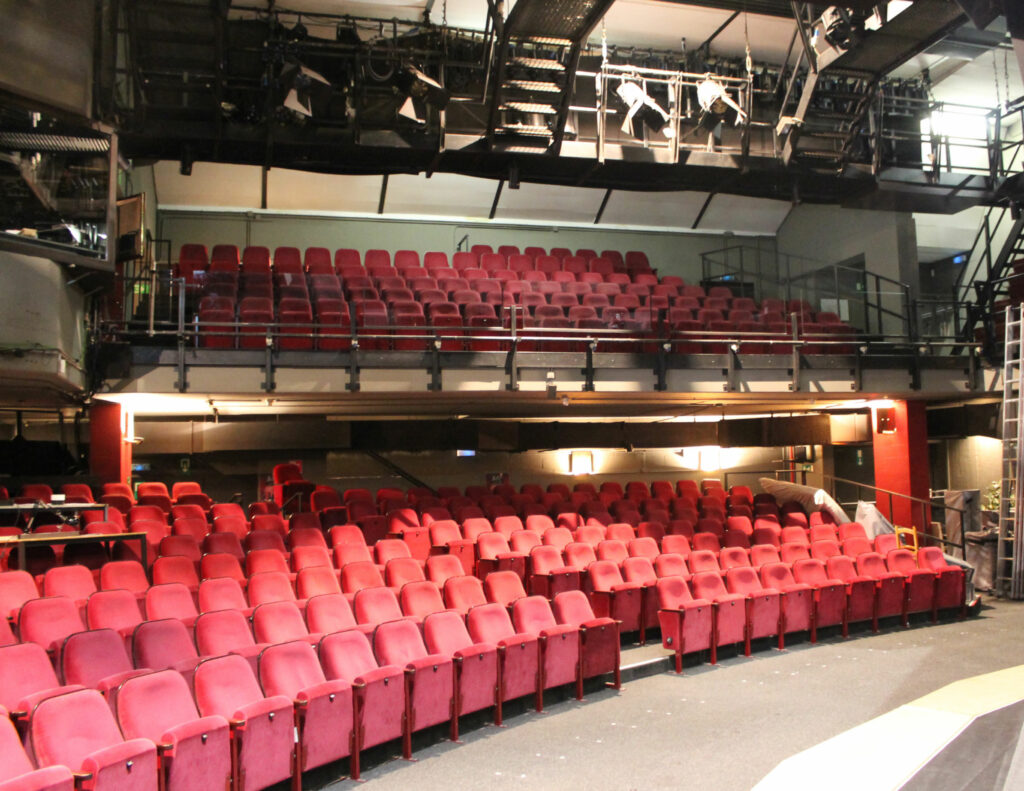
The existing stage and configuration, before works.






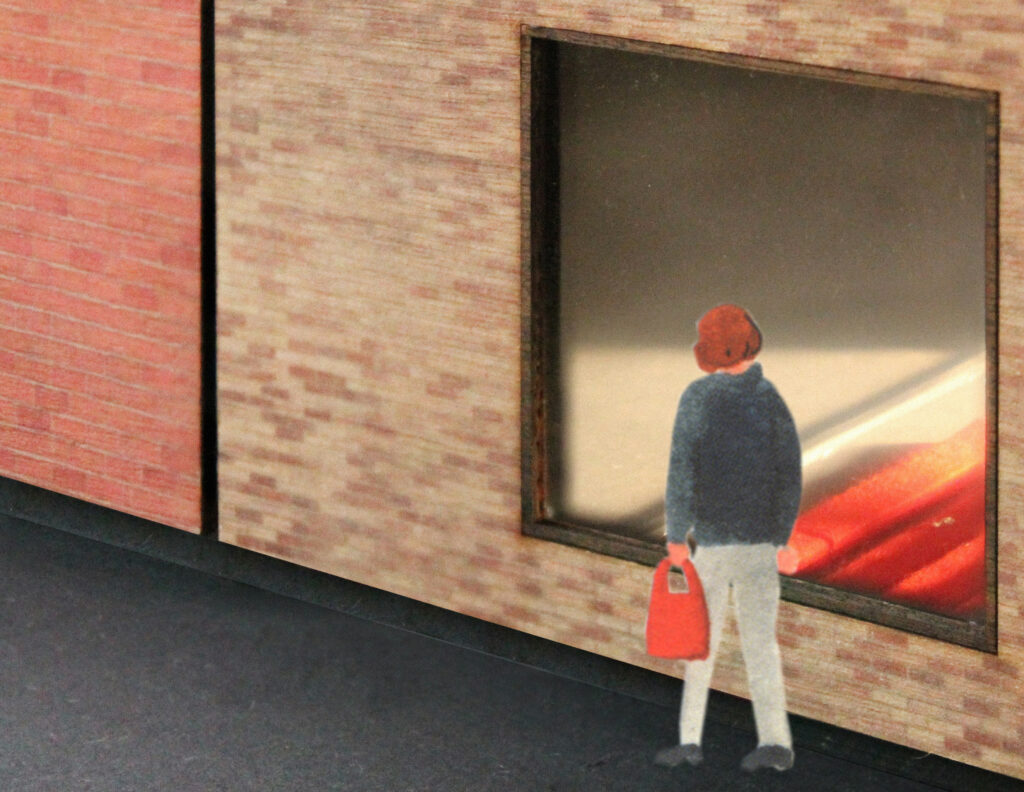
From the street and trough this window, the theatre tells the specificity of this city : sous les pavés, les artistes !










Before the start of the works, together with the staff of Vilar, we painted on the existing lift
construction the projection of the new project.




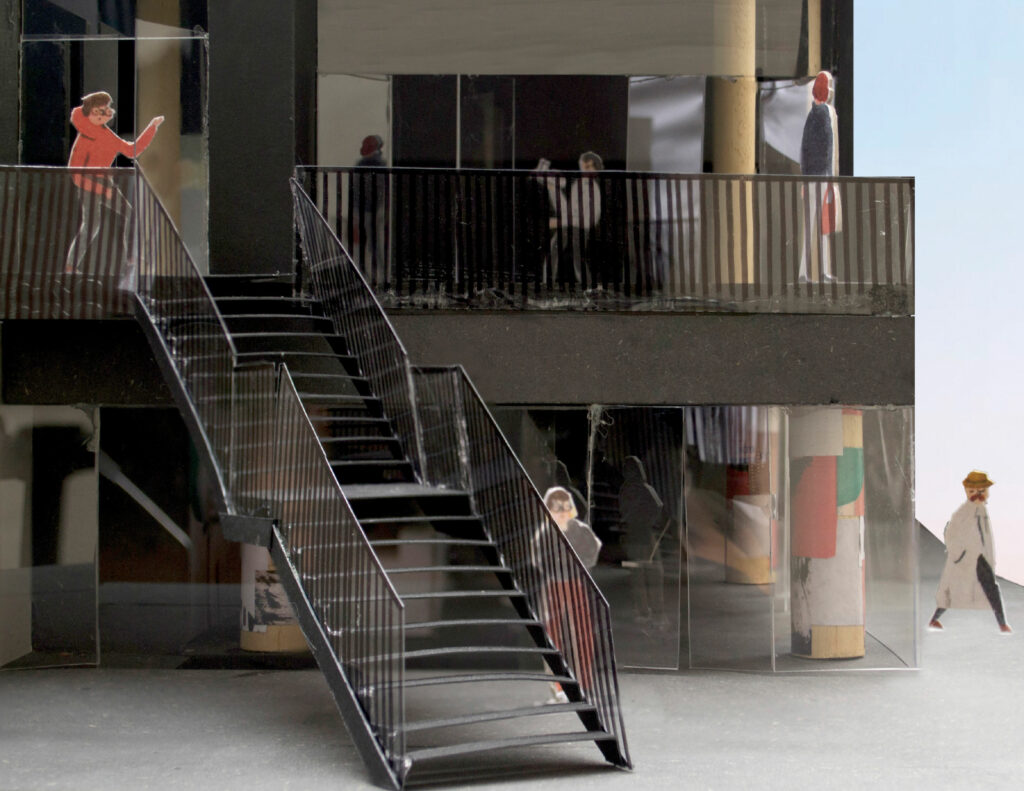





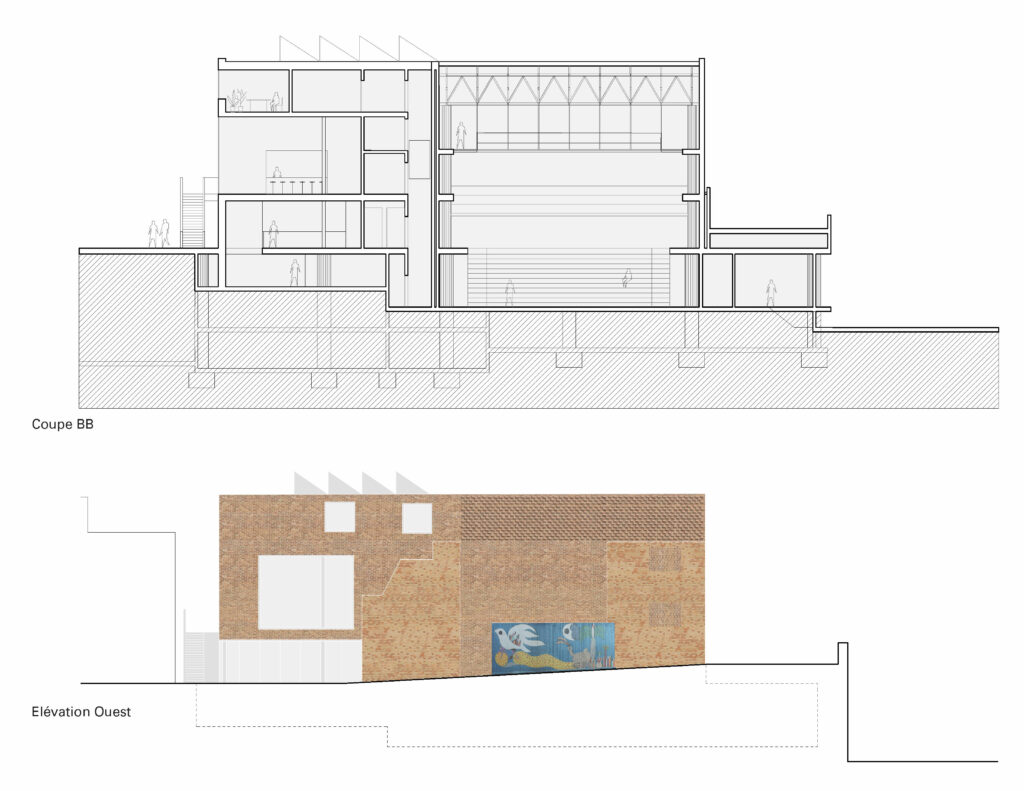








Outdoor artistic intervention by Pieter Vermeersch.

Inside artistic intervention by Robin Vermeersch & Dear Reader (Eva Moulaert).







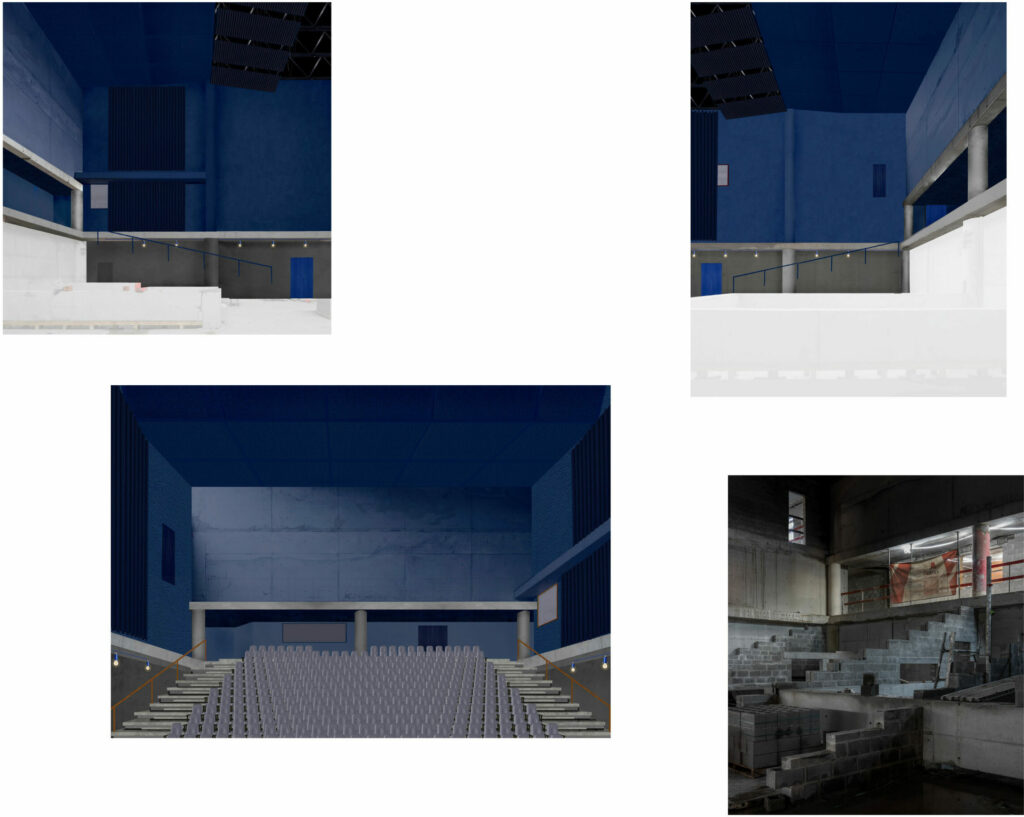
Using the construction site pictures of Corentin Haubruge to test very last colour choices to be made.
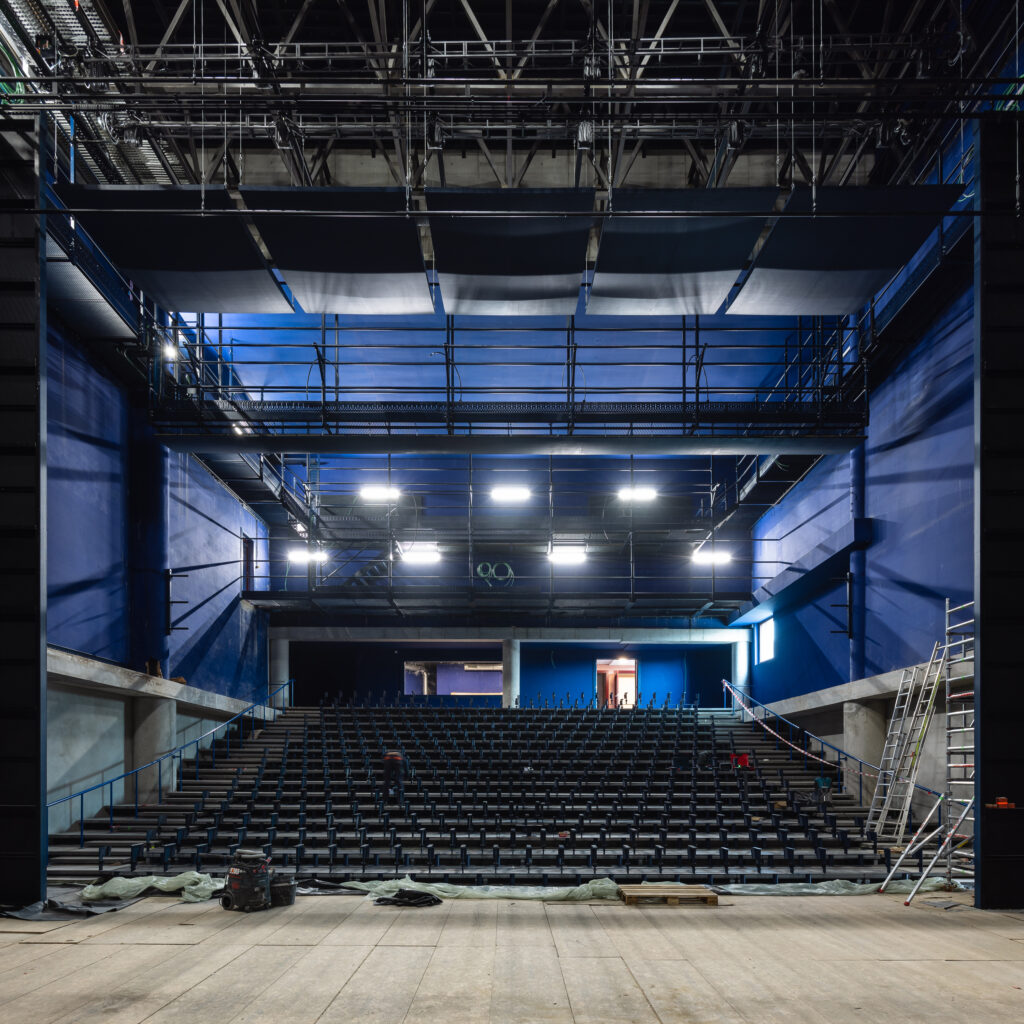








Théâtre le Vilar
Transformation of an existing theatre in Louvain-la-Neuve
Year: 2015
Status: Built
Program: Cultural equipment
Location: Louvain-la-Neuve, Belgium
Budget: 9.096.549 exc. VAT
Surface: 3500 m²
Client: asbl Atelier Théâtre Jean Vilar
Stability: JZH & Partners
HVAC: JZH & Partners
Energy: JZH & Partners
Theatre techniques: Artsceno
Artist: Pieter Vermeersch (Fresco), Dear Reader (Tiles), Robin Vermeersch (Tiles)
Photographer: Corentin Haubruge
It’s impossible to explain this project without mentioning a few words about the city where it is located. Louvain-la-Neuve is a strange, fascinating and post-modern university-town created in the 1970’s, which was shaped from scratch on a large plot in the countryside some forty kilometers south of Brussels. The city is built on a huge metastructure: massive concrete pillars every 8 meters that support two underground levels of parking, roads, storage and technical spaces. Laying on top, a pedestrian city intertwines with its academic faculties, shops and restaurants, a train station, facilities and student housing. The ambitious project, completely “dans l’air du temps”, was designed and built in a very short time, so short that some projects and buildings evolved during the works.
The Théâtre Jean Vilar, for example, was first planned to host a university restaurant, and changed during the construction into a theatre. The theatre has been functioning for forty years and has acquired a clear legitimacy and reputation within the city and surroundings with the years. The limited technical possibilities of the building and the lack of openness to the city were becoming more and more problematic, and urged the client to launch an architectural competition to rethink the entire building.
The new competition brief was mainly requesting for more height above the stage, better technical equipment, and improved public visibility.
Ouest decided to take advantage of the specificity of this city, built on two levels of technical space, and pushed the stage one floor down. The project preserves the existing roof structure, creating the extra height within the existing gabarite, and avoids modifying the existing urban volumes too much.
It also allowed to get rid of the existing freight elevator, to organize the logistics for decors etc. completely in the underground levels, and, to offer new possibilities for the theatre to dialogue and open up towards the vivid Place Rabelais. A new public entry is situated on the ground floor, while a new foyer is set on the first floor providing a direct access from the square, even when the rest of the building is closed.
Instead of developing a brand-new building identity that stands out of the city fabric, we chose to work with the original material of the 70s city: bricks. The façades of the simple volume are designed as a contemporary dialogue between existing and new brick patterns. Like a palimpsest, the different layers added over time show and reinforce the story of the city and the theatre. A carefully placed window opening to the street reveals the underground level and shows passers-by a hidden part of the city. Not only cars to hide, but also culture to show.
 Download pdf for this projet.
Download pdf for this projet.